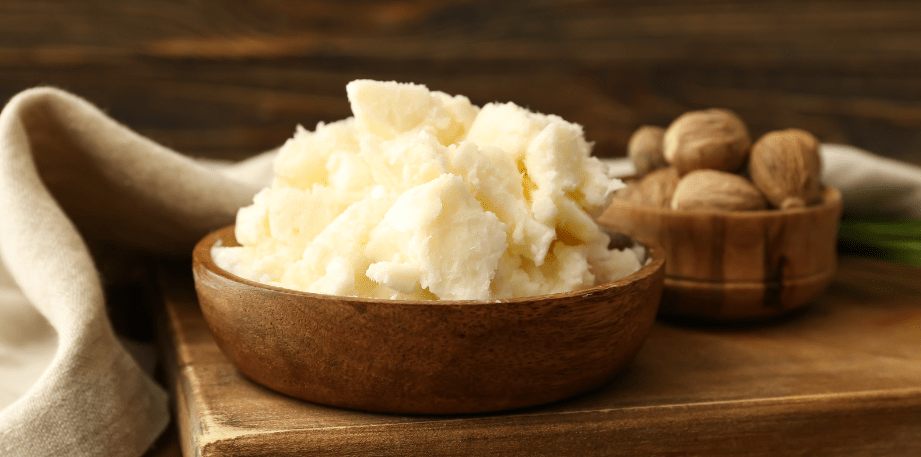
SHEA BUTTER
Shea butter is a moisturizer, emollient and an excellent ally, thanks to its high content of fats and vitamins, it helps maintain the health of your skin by maintaining natural moisture and protecting it from dehydration.
The origins of shea butter:
Shea butter comes from the fruit of the shea tree that grows naturally in the savannah of West and Central Africa. It extends from Senegal in the west to Sudan in the east, up to the Ethiopian high plateau. Shea production is therefore shared in 21 African countries including Ghana. An ancestral tree, the shea tree has been growing for thousands of years. Women use it in cosmetics, massage, pharmaceutical products but also in cooking.
Harvest and manufacturing method:
Shea butter is harvested every year for four months, from May to August. When the nuts are ripe, they turn brown and fall naturally to the ground.

Manufacturing:
Shea butter is made in a traditional way, but more and more women's associations are using mechanical equipment to limit the difficulty of the manufacturing process. And the manufacturing method can differ from one ethnic group and one country to another https://www.youtube.com/watch?v=Rxz5dTkMqaQ.
The kernels of the fruit are first crushed to obtain the almond, then boiled before being spread on a surface to dry them. Then, the nuts are roasted and dried before being transformed into a paste which takes on the appearance and smell of chocolate. The paste is then churned vigorously with warm water for almost an hour, the shea butter then begins to change appearance, it is then necessary to add a lot of cold water in order to wash it and to set the butter and make it rise to the surface.
The butter becomes compact, it is then collected by hand and placed in a pot on the fire. It is left to cook for about twenty minutes, stirring from time to time. It then takes on an iridescent yellow and green color, the impurities settle at the bottom of the pot, cold water is then added to bring the butter back up, it is filtered with a ladle into another container and put back on the fire to remove the last impurities. Once the butter is lukewarm, it is filtered again and packaged.
The use of shea butter:
Shea butter is used in cosmetics, food and as a massage oil for newborns, children and adults. In Europe it is mainly used in cosmetic products, etc.
Its benefits for the skin and face:

It is an excellent moisturizer and emollient due to its fat content of vitamins A, D, E, F.
It helps with cell renewal and skin hydration. It is rich in natural antioxidants, among other things, which fight against skin aging and protect against free radicals. Shea butter protects, provides suppleness and hydration to your skin. It helps treat certain skin problems such as eczema or psoriasis. These anti-inflammatory and microbial properties are restorative and soothing for problem skin. In Africa, it is often used to massage newborns every day and for the hydration of babies and children.
It helps pregnant women and people at risk of stretch marks to prevent them, by providing elasticity to the epidermis and suppleness thanks to its hydrating action on the skin.
It protects the skin after sun exposure thanks to the latex it contains. It is used before and after sun exposure, however, shea butter does not protect against UV rays, so you must use a good sunscreen, it is only a complement before applying sunscreen.
It is a good soothing aftershave to avoid products that contain alcohol, which can hurt skin that is already irritated.
For hair:

Shea butter is rich in essential fatty acids for hair care.
It gives shine and beauty to the hair, softens and nourishes the hair fiber in depth. It is particularly beneficial for dry and split hair, dry, brittle, and also for afro hair.
Soothing and regenerating, it softens hair and fights dandruff and itchy scalp. It can also be used as an oil bath.
Blog article written by: N'DAW Khardiata - SIYIRI